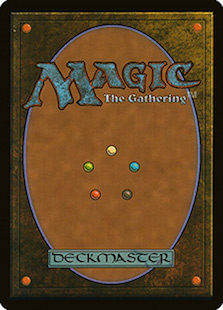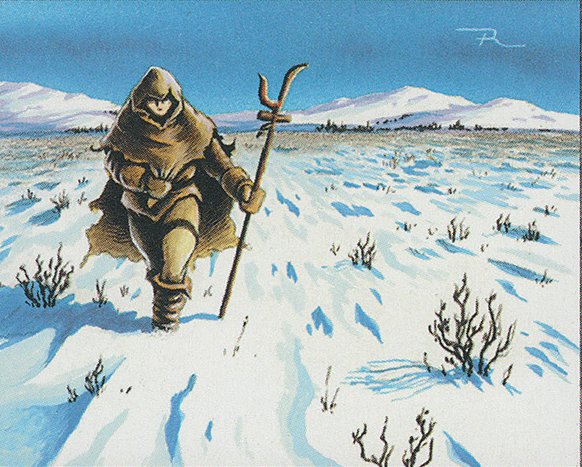This is the second part of an article series on creating a custom Premodern set. Check out the first part here. Enjoy! / Martin
Building a new but familiar Masters set
We are four guys from Finland who started playing Magic in the Premodern era. We wanted to go back to that era through a limited set which felt more like a modern set in terms of limited. For this purpose we started designing a limited set based on the Premodern card pool. Our goal was to use modern design principles found in all previous Masters sets. This included heavy focus on archetypes, increased power level compared to regular Premodern era sets, no “unplayables” in packs and drawing from nostalgia. The design process was implemented in a top-down manner and was DX (draft experience) driven. We knew that the best drafting experience comes from cube drafts. Cube drafts rely solely on the drafting of archetypes. In a sense you are not drafting colours, you are drafting a complete deck. This is something we aimed for, which required the design to start at the archetype level.
Many people approach designing cubes and similar game experiences as a solo endeavour, but we wanted to do the design and development as a team, consisting of many people. While this approach brings its own challenges, we felt that by having multiple people participate, we would get a better end result, as everyone brings their own ideas and experiences to the table. You can easily be inspired by the ideas that others provide, and figure out themes, cards and synergies you would not have otherwise. The next time you are designing a cube or similar, we highly encourage you to get a friend to work on the project together with you.
We had the basic idea of a Masters type set that would have ten main archetypes, each corresponding to a two-colour combination. When browsing through the Premodern card pool, it quickly became clear that game play themes are not as highly developed as in more modern sets. This lack becomes especially clear when looking at enemy colour pairs, as Premodern era thematics relied heavily on allied colour combinations. The lack of clear themes for certain two-colour pairs meant that while we had a fairly easy time to come up with many of the archetypes, others such as UR were causing us trouble. This lack of support for enemy pairs does not only apply to spells, but also to lands. UW gets access to Adarkar Wastes, Flooded Strand, Skycloud Expanse, Coastal Tower and Flood Plain, whereas UR has to settle for Shivan Reef and the much worse Caldera Lake. We contemplated adding additional copies of Shivan Reef to balance the colour-pair discrepancies, but ultimately decided to stick to our “one of each” philosophy for the mana fixing lands.
Regarding colours in general, red was the most problematic and narrow colour in terms of design space. Premodern era red cards were mostly burn spells, goblin creatures and land destruction. Modern red mechanics include “spells matter” mechanics and conditional card draw (exile top card of library and play it or discard+draw). A similar design constraint existed in green, as Premodern sets have practically no removal available in the colour. This is why we ended up with Roots, and a colourless answer such as Triangle of War. Having a colourless answer to problematic small creatures was also important, as otherwise cards like Sparksmith and Waterfront Bouncer can easily win games single handedly.

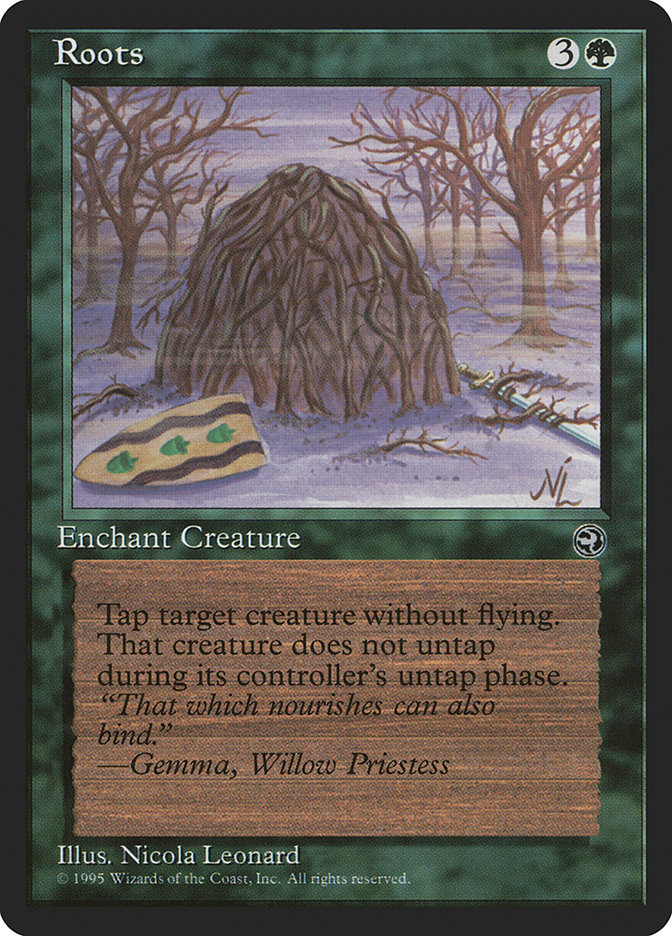
Archetype design
For example images of each archetype, check out the “Introducing Premodern Masters” article.
Green and white
The GW archetype ended up being an enchantress and aura based deck. We thought about a ramp alternative but we didn’t find any fitting multicolour payoffs at common or uncommon. In that sense the enchantress archetype was very clear cut. At the common level it has great auras and creatures like Armadillo Cloak, Ancestral Mask, Phantom Nomad and Yavimaya Enchantress. The archetype really rewards you for having many enchantments in your deck as every enchantment generates additional value by buffing up creatures or generating cards. In that sense the archetype goes over the top and scales up nicely.
Green and red
The GR archetype was a midrange beast deck from the beginning. The beast payoffs were mostly assembled from the Onslaught block but good beast creatures were also available in sets across Tempest, Urza, Masques and Odyssey blocks. The main problem for the GR beast deck is its lack of cheap creatures that attack. The “beast curve” generally starts at three mana, so by adding a separate sub-theme of cheap and scalable creatures—slivers—we were able to bring down the mana curve while maintaining the central theme of GR, which is the aggressive mid-range creature deck. We also felt that the beast deck was lacking a powerful sign post uncommon compared to other archetypes. We had a lengthy debate whether Contested Cliffs would be too oppressive and powerful as an uncommon. In the end we decided to keep it as the multicolour uncommon for GR and also added Fires of Yavimaya. We felt that the GR deck was too slow and underpowered without powerful additions.
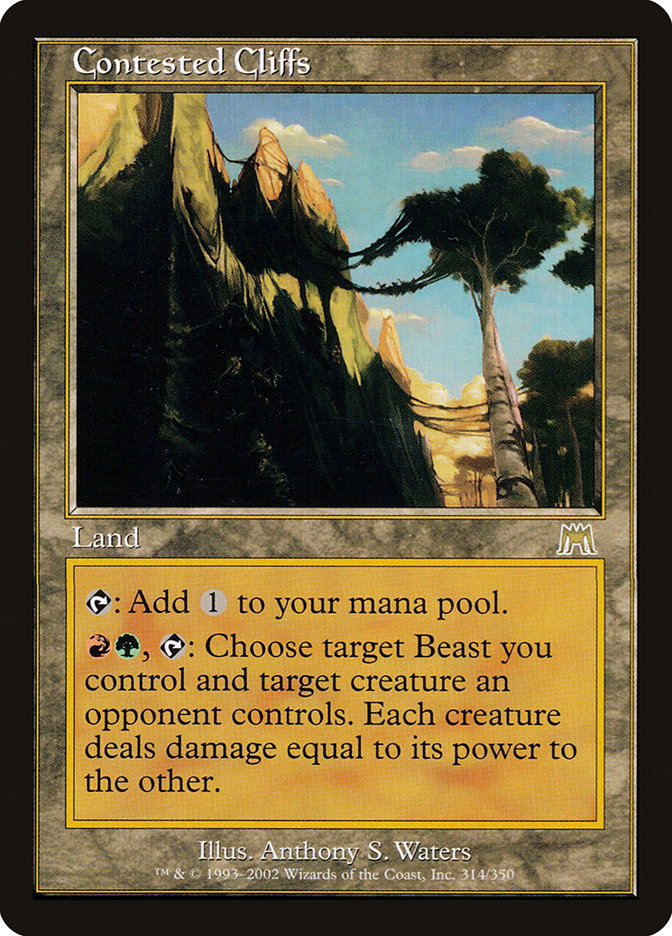
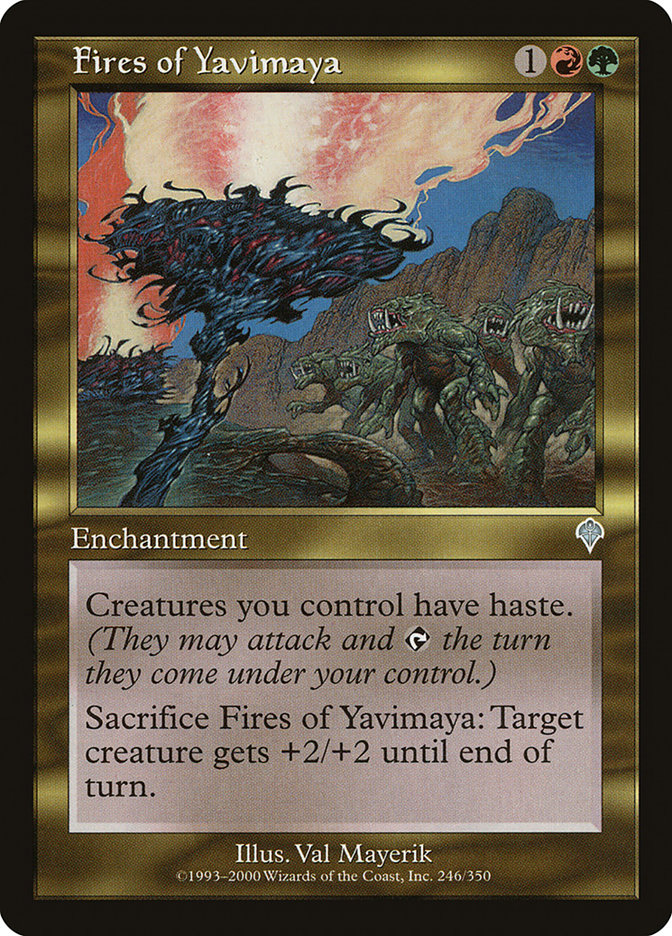
Red and black
The RB archetype went through several iterations before ending up as the goblin archetype. We tried to include a goblin theme in the set without it being an archetype as such. Initially, we tried to think about black zombies with Deadapult and such (Shivan Zombie served as an inspiration). It just was too hard to make it work as an archetype, as there were not enough cards across the various sets to support this. Therefore we went with the idea of making the goblin archetype the RB archetype. Black is mostly a support colour and Dralnu’s Crusade is the main reason for adding black to the heavy red goblin deck.
Blue and black
Initially we thought about some fairly typical UB limited archetypes, such as being a reanimator deck, or a pure control deck. These felt a bit boring, so we went another route, and decided we wanted to make Ichorid work in a limited set and looked for heavy synergies that would make it viable. In order for this to work, the UB archetype ended up one of the most pushed archetypes in the set. Pushing the archetype meant included Zombie Infestation, Ashen Ghoul, Tolarian Winds and Krovikan Sorcerer as commons and Squee, Goblin Nabob, Intuition and Krovikan Horror as uncommons. We wanted the deck to resemble a dredge type deck that plays nonlinear magic if working correctly, while still offering opportunities for the opponent to interact. However, drafting the deck is meant to be a real challenge that can easily backfire.

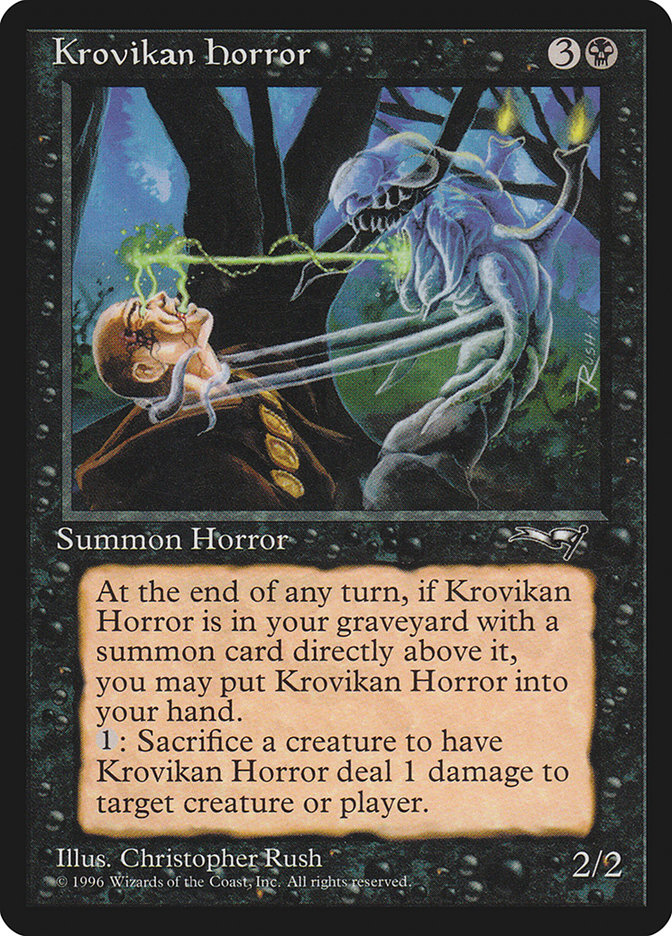
Blue and white
The UW archetype started out as a “flying matters” and “gating” archetype with Radiant, Archangel, Sawtooth Loon and Man-o’-War. The archetype relied on tempo by playing ETB creatures and bouncing them back to hand with Silver Drake and Sawtooth Loon. We switched the general theme of the archetype from flying to the more creature type oriented birds theme, because the theme seemed fun (and a bit goofy). Apart from Radiant, Archangel many of the uncommon payoffs (Keeper of the Nine Gales, Soraya the Falconer and Celestial Gatekeeper) revolved around birds, so we eventually ended up cutting Radiant, Archangel. We also felt that a recursive Man-o’-War effect was too oppressive (and also was just a generic powerful card), so we left it out. We also wanted to give the archetype a rebel sub-theme that revolves around Defiant Falcon, Defiant Vanguard and Mistform Ultimus. The goal is to give the archetype a strategy to “go wide” with Mistform Ultimus acting as a rebel bird. This gives you a body that is slightly larger than the typical bird, yet still benefits from the cards which care about the bird creature type. As the UW deck leaned more towards white and we wanted to avoid too many cards that required double blue, we chose to include Lost in Thought as a pseudo-removal spell for blue, over another option like Frozen Solid.
White and red
The WR archetype is a cycling control archetype that revolves around Astral Slide, Lightning Rift and Spirit Cairn. This archetype is really not viable to draft without one or several of these uncommons. The design of this archetype was the most straightforward when compared to other archetypes. The archetype also favors ETB and value creatures such as Flametongue Kavu, Ancient Hydra and Teroh’s Faithful in conjunction with Astral Slide. Weathered Wayfarer also functions as a semi-engine in searching for cycling lands. This was one of the archetypes we knew that we wanted to have from very early on, as it does something different from what WR does in normal limited (attack with small creatures). When working with these older sets, it is also worth noting that most effects are symmetrical, unlike in modern design. This means that Lightning Rift triggers off the cycling cards both players cycle. Likewise, your slivers also help your opponents’ slivers.
Blue and red
The design of the UR archetype was very difficult. During the process we thought about a variety of different themes such as slivers, pingers and gating. Slivers was the one we developed the furthest, but the individual creatures just ended up so weak that unless you manage to both draft enough and draw them every game, your chance of winning a game was just too low. We ended up with something we called “stacking spells”, which drew inspiration from Accumulated Knowledge. Since we knew our draft experience would include up to four of each common per draft, we could utilise this mechanic in a way that traditional one-off cubes can’t. It was also nice to have a blue-based control deck in the format, as that was such a strong part of blue’s identity during the Premodern period. We were able to include some fun support cards for this archetype, such as Intuition and Sapphire Medallion.
Blue and green
Blue and green do not have great multicolour cards available, as most of the older ones are really bad, and the ones from Apocalypse are mainly generic tempo cards (Temporal Spring and Gaea’s Skyfolk). However, in the Odyssey block, UG had a fairly strong identity with madness and threshold, popular mechanics in constructed decks at that time. Madness has been used in many Masters sets, and Wild Mongrel is a very powerful common. For this reason we decided to go with threshold over madness, as the cards in threshold require more work, and as such are less generically good than the madness cards. Being able to add Wood Sage as a strong uncommon for the archetype was also a strong factor. Originally we actually had Wood Sage as a common, but it proved too strong in testing.
Green and black
Much like UG, black and green drew inspiration from a deck that was played in Standard during the time Onslaught was part of Standard: BG Sacrifice. The deck revolved around sacrificing Wirewood Herald and other cards to Nantuko Husk, and our limited archetype ended up quite similar. We got to use Mongrel Pack, an interesting card from Tempest, that has a fairly unique timing restriction for getting the tokens. By adding additional support such as Caller of the Claw and Symbiotic Beast, we enabled Phyrexian Ghoul to be a very scary threat from the BG deck.
Black and white
Our initial thought for black and white was to go with the shadow mechanic, but that seemed like it would lead to boring games, as your creatures are practically unblockable and can not block. The next idea was rebels, but unlike more recent sets, black doesn’t bring much to the table. While looking over BW multicoloured cards, we came up with the idea of clerics, which is mainly supported via cards from the Onslaught block. Another angle for BW that we added later on in development was Monk Idealist in combination with Sicken, Exotic Curse and Seal of Doom. We originally had other removal spells (Expunge and Cruel Revival), but decided to lean in to the “enchantments as removal” theme to make Monk Idealist better.
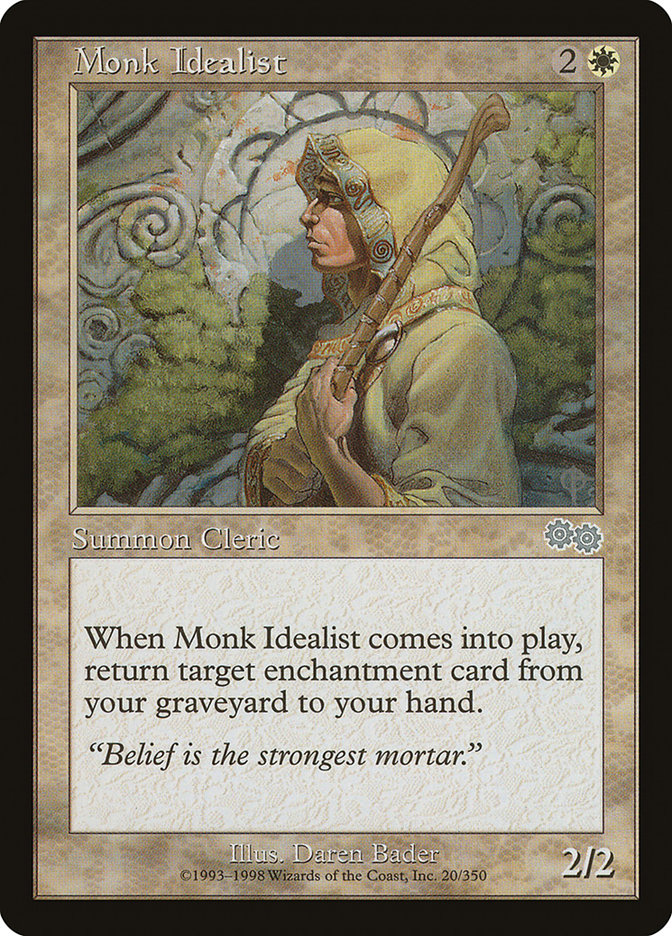

In addition to main archetypes we also included minor archetypes and sub-themes. Minor archetypes include Domain and UBR Control. Sub-themes included slivers, rebels, animator, and the Scion of Darkness engine. Sub-themes are mostly archetype specific synergies which provide a function for the archetype that it’s lacking, or offer another angle of attack.
The Animator sub-theme revolves around Breath of Life. Breath of Life can either be utilised to animate Scion of Darkness in the BW clerics archetype or to animate Chartooth Cougar in the RW cycling deck. Krosan Tusker and Wirewood Guardian are also viable animation targets.
Designing for archetype success
Successful archetypes rely on the balance of types of cards available: support, enablers and payoffs. In the case of the UG threshold archetype, a support card would be Mental Note, an enabler would be Merfolk Looter and a payoff would be Krosan Beast. Each archetype also has its own signpost uncommon, a card that strongly incentivises you to draft the given archetype. In the case of UG Threshold the signpost uncommon is Wood Sage. In addition to the right mix of support/enabler/payoff cards the archetype deck also has to have a good mana curve that helps the deck achieve its game plan. This meant that many good cards had to be cut from the finished set because of converted mana cost related issues. A common problem was that many preferred commons and uncommons of a given colour shared a CMC. It is not wise to have all green uncommons have a CMC of 4, let alone be creatures. Commons and uncommons needed to be diverse in terms of CMC, card type etc. The diversity of CMC and card types is something that is an easy pitfall for every cube/set designer.
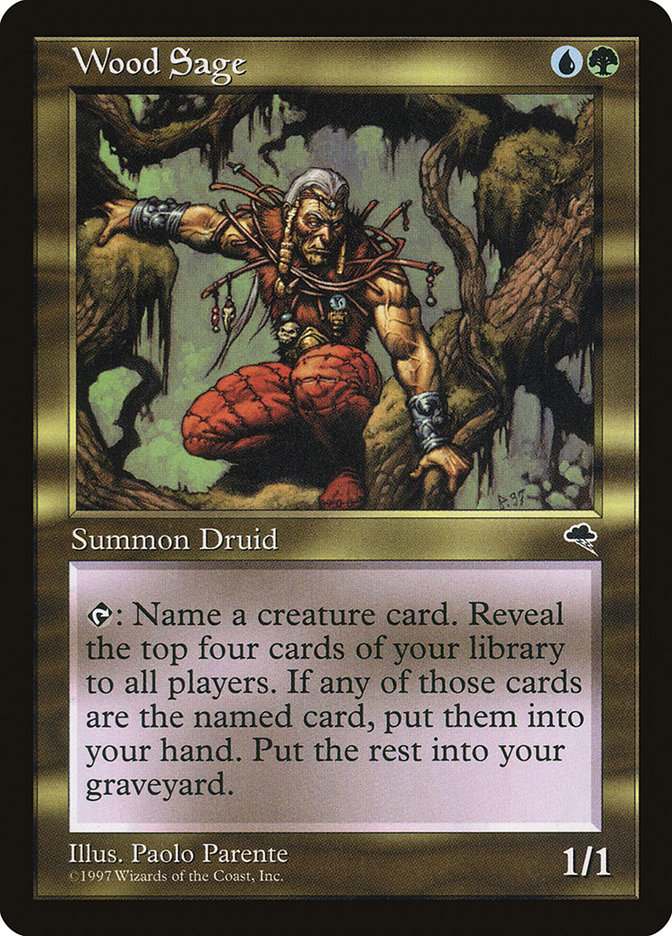
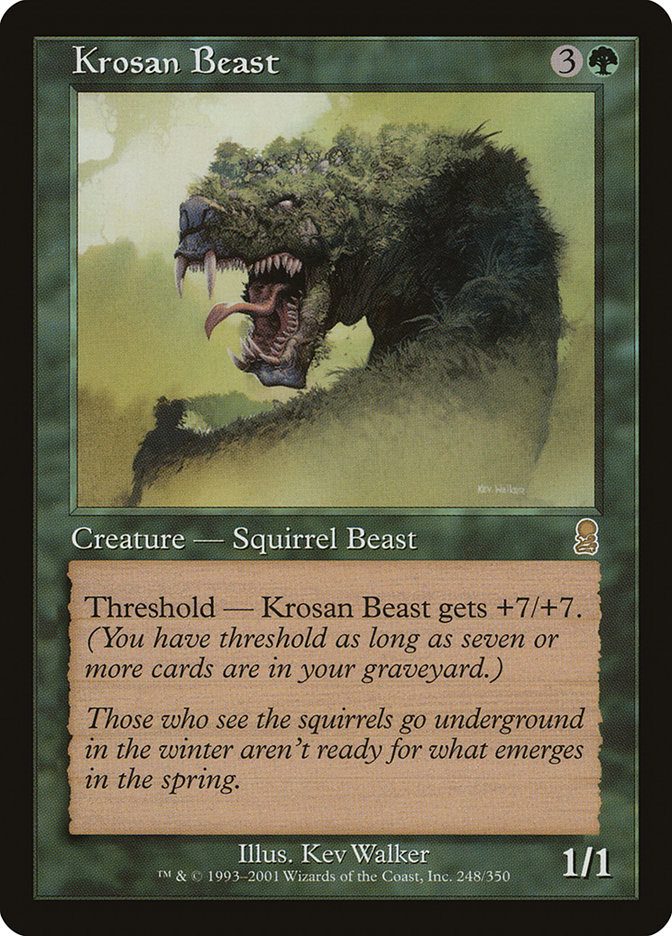
We tried our best to include as many cards as possible that could serve multiple archetypes in a meaningful way. Some examples below:
- Benevolent Bodyguard shines in GW (protecting enchanted creatures), but is also a cleric for BW, and a serviceable 1-drop for UW (good for Battle Screech).
- Monk Idealist is mainly good in BW (it is a cleric and it gets back removal enchantments), but it can also be solid in GW, helping get back auras if your opponent kills your creatures.
- Carrion Feeder is an important part in the BG deck, which needs sacrifice outlets, but it also works well in UB, as it can sacrifice Ichorid after combat to gain some extra value.
- Celestial Gatekeeper works best when combined with Cabal Archon and Rotlung Reanimator in BW, but can also help UW Birds in some of the grindy matchups.
- Tolarian Winds is a bit of a janky card, and primarily meant to help the UB deck, but at the same time it can also help the UG deck fill the graveyard for threshold. The same is true for Mental Note to some extent.
- Symbiotic Beast functions both as a decent expensive threat for the RG beast deck (with some resiliency built in), and also works very well in BG as a source for five bodies. Indeed, you can draft a BG deck that plays some of the Beasts-matter cards like Wirewood Savage.
A balancing act
Apart from archetype cards, the set also had to provide classic card types such as threats, answers, card selection, mana fixing and sideboard cards. To offer flexible niche answers such as enchantment and artifact removal, we chose cards with cycling (Wipe Clean and Break Asunder). Additionally, we wanted the enchantment removal spell to exile, in order to have a clean answer to Rancor and Brilliant Halo. A clear design choice was also to offer a decent draft strategy in terms of just drafting a good mana curve and good cards without much synergy. To give the drafter more freedom regarding the direction of his/her draft, we decided to make mana fixing easy. We wanted to make splashing somewhat effortless but didn’t want to end up in a situation where the best decks would be generic “four colour good stuff” decks. This also gave us design space to include “iconic” non-archetype cards in the set such as Lightning Bolt, Counterspell, Birds of Paradise, Hypnotic Specter and Swords to Plowshares. Our primary objective regarding DX was nonetheless that we really wanted the player to be rewarded for drafting an archetype although it might backfire.
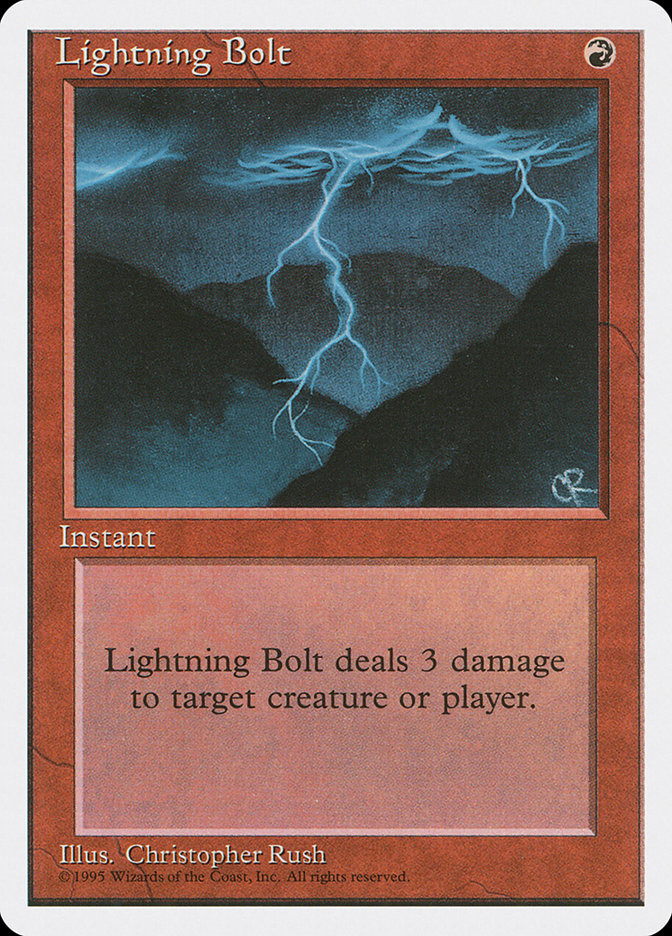

The reward of drafting an archetype was also tied to power level. We wanted the set to look and feel like a Masters set. This required a significant increase in power level compared to the original draft experiences of the sets included in the Premodern era. To achieve this increase in power level, many cards had to be rarity shifted from rare to uncommon, uncommon to common and even rare to common. Our basis for the shift in rarity and rarity in general was as follows:
- Common slot (120 different commons): generic cards such as archetype support, enabler, payoff cards. Mana fixing, card selection, removal, flexible (sideboard) and cycling cards.
- Uncommon slot (80 different uncommons): Powerful archetype payoffs, powerful/flexible cards (Lightning Bolt, Rancor), unique effects (Wonder, Hell’s Caretaker, Squee, Goblin Nabob), “underpowered” cards that can shine in particular archetypes (Auratog, Ertai’s Familiar, Magma Sliver)
- Rare slot (93 different rares): “Rare effects” (Armageddon, Time Warp, Recurring Nightmare, Jokulhaups, Survival of the Fittest, Rith, the Awakener), Archetype powerhouses (Eternal Dragon, Phyrexian Plaguelord, Siege-Gang Commander, Prophetic Bolt)
For rares, we also tried to make sure there was a certain balance between the different rares, so that each archetype would be getting approximately the same amount of rares that are good in that particular archetype. The goblins deck is not really looking to play Crater Hellion, but both WR and UR will pick it very highly. Some rares were deemed too oppressive for limited play, and as such were excluded from the sets. This includes cards such as Opposition and Masticore.
The balance of power level between colours and archetypes was in many ways complicated. It was a great opportunity to make archetypes work in terms of cross-block synergies (Wood Sage from Tempest in UG Threshold). On the other hand, the risk that some archetypes would be overpowered compared to others was real. To balance the colours and archetypes compared to one another, we needed to “push” several archetypes and make others worsee. For example we decided to give the GR Beast archetype two multicolour signpost uncommons: Fires of Yavimaya and Contested Cliffs. On the other hand the Goblin archetype needed to be made worse. It managed to get explosive starts that several other archetypes just couldn’t keep up with. We managed to select creatures in a way that would make explosiveness harder for the archetype. For example Goblin Patrol and Mogg Flunkies interact poorly from a mana curve point of view yet play important roles in the archetype in general.

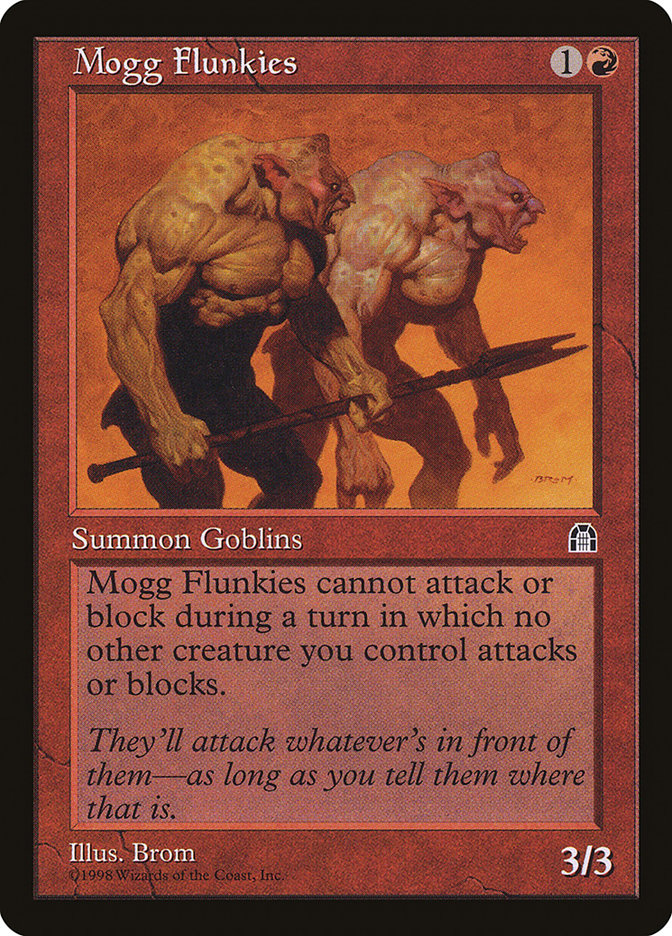
In order to get the balance correctly, you cannot just theorycraft. You need to play some actual games of Magic. We played a fair amount of drafts with our friends, and gathered feedback from the players in order to inform our iterative design. In the next and final article in this series, we will talk about how we designed the whole product experience, including the digital version we used for testing and playing games of Premodern Masters limited.
Cheers!
– Max, Sakari, Kim and Aleksi
